On a breezy Saturday outside Wrigley Field, vendors lined Gallagher Way with upcycled jewelry, textile scraps and bins full of odd but useful discards, all in celebration of a Mother’s Day market with a twist. The Trashy Mother Earth Market, hosted by Nowhere Collective, drew dozens of local makers and nonprofits together to spotlight sustainability, circular design and creative reuse.
The Trashy Market series highlights vendors who transform waste into something new; often beautiful, always practical. This year’s spring market, themed “Trashy Mother Earth,” landed on Mother’s Day weekend and blended eco-conscious shopping with community education. From local nonprofits like Reduce Waste Chicago to artists who repurpose interior design samples into DIY blanket kits, the market was equal parts craft fair and environmental statement.
Katy Osborn, founder of Nowhere Collective and the Trashy Market, never set out to host a Mother’s Day event. But when she realized the spring edition of her “trashy” upcycled goods series would fall on the holiday weekend, the theme practically wrote itself.
With hopes of better weather, Osborn moved the market to May instead of hosting it earlier in the spring season. “It just happened to land on Mother’s Day weekend, so we kept the ‘earth’ part and then incorporated the ‘mother’ part,” Osborn said.
Osborn started organizing the Trashy Market in 2022, building each one around a seasonal theme and a focus on sustainability. This weekend’s Trashy Mother Earth Market took place outside Wrigley Field at Gallagher Way, bringing together nearly 50 vendors, nonprofits and community groups; all with a shared commitment to creative reuse.
One of the biggest evolutions of the event came last year, when Osborn introduced “material collection” at the markets. Visitors are encouraged to bring in household items for artists to repurpose, sparking more conversations between makers and shoppers about sustainable practices.
“It helped people understand what the concept of the market is that much more,” Osborn said. “And the makers who collect materials tend to sell more goods.”
In the front center of the market, a large circular structure invited attendees to weave scraps of fabric into a growing communal tapestry. Known as Loom 360, the interactive installation was created by Osborn and fellow artists as a way to promote creativity while educating people about textile waste.
“The Loom 360 was just an art installation concept that we had come up with last year, and then we’ve been popping it up … and creating these tapestries,” Osborn said. “So, it’s really a way for attendees to get their hands on something and be creative and educate them on textile waste and the importance of trying to keep things in circulation.”
Loom 360 has now appeared at many reuse events around Chicago, evolving with each appearance as more people contribute to the piece. For Osborn, it’s a natural extension of Nowhere Collective’s mission: to bring people together around sustainability through art and community-building.
Alongside artists and vendors, local nonprofits also played a key role in shaping the market’s mission. Reduce Waste Chicago, a 501(c)(3) founded during the pandemic, set up a booth to collect hard-to-recycle household items and spread awareness about sustainable living.
“Our mission is to help people reduce waste,” said Sherry Skalko, the organization’s founder. “We collect over 40 types of items for reuse or repurposing — things that don’t belong in your curbside bin but also don’t belong in a landfill.”
Skalko began the initiative after realizing how difficult it was to responsibly dispose of everyday waste. What started as a grassroots effort in North Center has since grown into a citywide operation, diverting more than 55,000 pounds of material from landfills over the past three years.
“It’s kind of depressing if you think about it too hard,” Skalko said. “But also — yay, right?”
Barbara Krech, a manufacturer’s rep with skill in textile design, participated in the market with her Sickler Welcome Blanket Kits, which repurpose fabric samples from the interior design industry. Krech partners with Welcome Blanket, a project that encourages crafters to make quilts for immigrant and refugee resettlement groups.
“I make quilt kits for people who want to help and don’t know how,” Krech said. “I get calls from architects and interior designers who say, ‘I’ve got a bunch of fabric for you,’ and I go pick it up. It’s all material that would otherwise go to a landfill.”
Krech assembles the kits by hand and gives them away for free, hoping to make it easier for others to participate in community-based activism. Her work merges craft and purpose, a form of “craftivism,” and reflects a wider movement in the market where upcycling becomes both a creative and political act.
“The founder of Welcome Blanket, Jayna Zweiman, decided when the current administration [in 2016] said they were going to build a wall 200 miles long, she said, ‘We’re going to make a welcome blanket 2,000 miles long,’” Krech said. “It’s a way of creating these quilts, with the help of community members, as a way to send a welcoming message to immigrants and refugees.”
The combination of sustainability and activism creates a space where crafters and community members can directly engage with critical social issues while reducing waste. Krech’s Sickler Welcome Blanket Kits are a prime example of how local vendors at the Trashy Market are not just selling products but contributing to larger movements of social and environmental change.
For Krech, the market is more than just a place to sell upcycled products. It’s an opportunity to inspire others to think creatively about waste and reuse.
“I’m a manufacturer’s rep, but these are from the interior design industry,” Krech said. “So, I’m diverting beautiful upholstery fabrics from the landfill, and I’m giving people a chance to make something that’s meaningful.”
As Osborn’s Trashy Mother Earth Market continues to grow, its mission of upcycling, creative reuse and sustainability becomes ever more impactful. With the continued support of nonprofit partners like Reduce Waste Chicago and creative vendors like Krech, the event is helping to build a community of makers, activists and consumers who are dedicated to reducing waste, one creative project at a time.
“We are not purists,” said Osborn, “so, if you are doing any sort of reclaiming of materials, reusing of stuff that already exists, then you can participate. It doesn’t have to be 100%.”

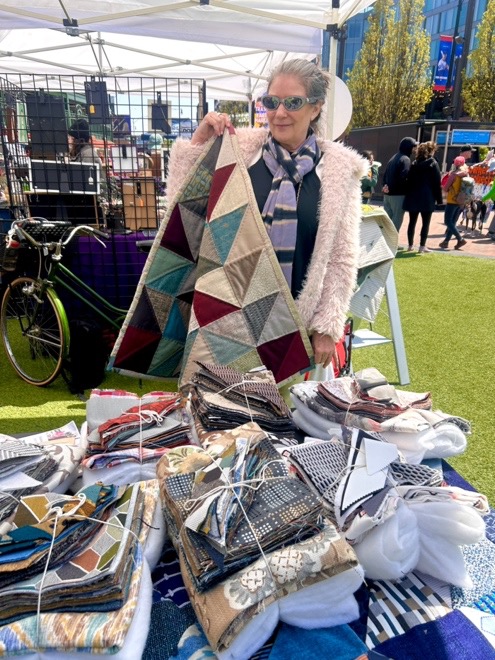
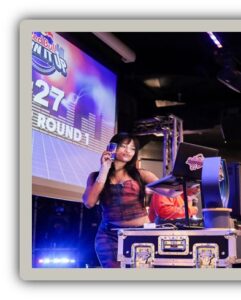




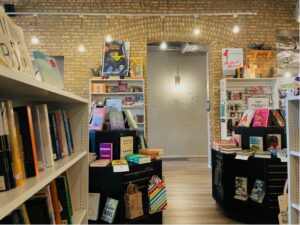
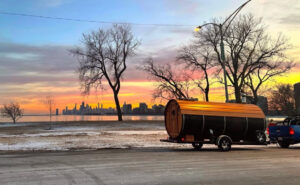
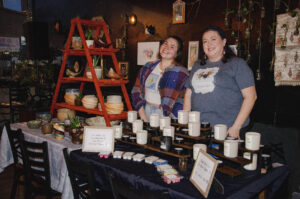
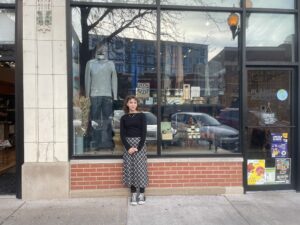

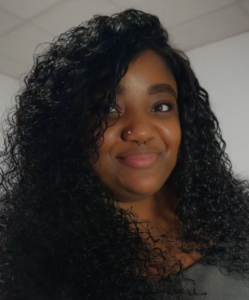
Be First to Comment